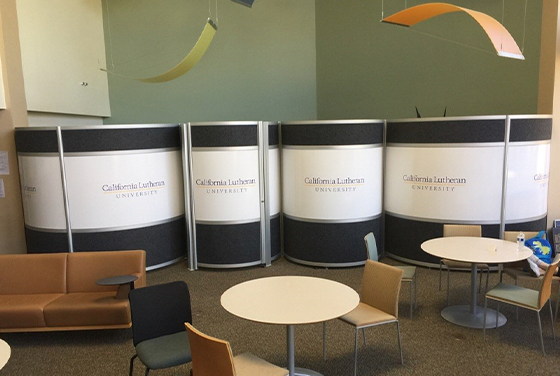
Traditional cubicle office designs aren’t going away, but they have evolved beyond the stereotypical depiction that many employees think about when they hear the word. They’re no longer the stuffy, isolated mini-prisons depicted in Hollywood comedies like Office Space. These days, cubicles have transcended their original concept to become something much more dynamic and fitting for the modern workplace.
By contrast, benching systems have picked up immense steam over the years, and they’ve become a full-on competitor to the cubicle-based office. It’s important to note the differences between the two, and how both can play a role in your office environment, for entirely different purposes.
CUBICLE DEFINITION
Cubicles are workstations designed to give employees more privacy, especially in a busy setting where a lot of employees share the same space. They come in a variety of sizes and styles, including some will lower walls and an open side, to higher walls that block out interaction from other people. Some employees find cubicles highly advantageous, especially when it comes to concentration. Others feel suffocated in a creative bubble they can’t escape from.
During the 1960s, the cubicle design really took off, and it hit its peak in the corporatized 1980s before companies began re-evaluating their effectiveness. By the time the new millennium arrived, the cubicle design was already under maximum scrutiny and pressure to change. The tradeoff was obvious, and troubling. Companies wanted employees to be productive, and that meant less distraction. However, the absence of interaction between workers sidelined them out of the company’s culture and any sense of community. As such, the cubicle approach began to evolve into something more dynamic.
BENCHING SYSTEM DEFINITION
In contrast to the compartmentalized approach of cubicles, benching systems are merely a series of desks with optional (and minimal) partitioning designed to give employees enough autonomy without boxing them into a single unit. The concept really began to take off in the new millennium as the controversial open space office design became more popular with forward-looking companies. Flexibility was also a key motivating factor for benching systems, with each unit centered around collaborative workspace concepts. With the rise of laptop and tablet work culture, some companies used benching systems to effectively move away from static desk arrangement to a more dynamic approach where anyone could sit anywhere and share an assigned pool of items.
The highly configurable nature of benching systems also made them stand out as attractive alternatives to cubicle designs. They could be arranged practically any way the employer desired, and this allowed for perfect placement and exploitation of available office space. It opened many workplaces up by allowing for less constricted pathing and more open-air freedom.
WHICH IS BETTER?
Choosing which system is better for your particular workspace depends largely on the needs of your employees. While either system can (and does) work, it’s wise to consider what option will yield more ease of use and productivity. For instance, a benching system could work wonders for a sales call center due to the natural energy that abounds on the sales floor. This kind of kinetic exchange can inspire salespeople and call center employees to go the extra mile for their employers, and their customers.
Alternatively, a cubicle system might be better for those who need to concentrate and require less distraction. Coders, accountants and other data-driven workers need to hunker down and zero in on their work without being distracted by the goings-on of the workspace around them. Another factor to consider is hardware. While it’s totally fine to use a benching system for stationery desktop-based computer systems, a cubicle setup could be more advantageous when it comes to access, cable management, etc.
OUR APPROACH
fluidconcepts saw the shift in cubicle culture a long time ago, and we anticipated the need for the platform to evolve, even as we rolled out our own benching systems for companies to take advantage of. For instance, our popular OrbitPods line has taken the cubicle concept and accelerated its evolution into something hip, contemporary and stylish. We’ve banished the boring and focused entirely on zeroing in on a design that compliments a company’s internal culture and workflow, and that’s especially important for employees who want to feel as if they’re working with a forward-thinking company.
Similarly, our benching systems come in a wide variety of formats and styles (not to mention finishes) that allow companies to custom-tailor a workspace to their exact needs. Offices feel bigger, roomier and more lively thanks to a series of solid engineering designs that foster a better sense of company spirit and collaboration. As always, it’s going to come down to your employees and their needs. Analyze your workers, question them and gather intel about what kind of workspace they’d prefer to work in. From there, execute a plan to utilize either cubicles, benching systems, or (dare we say it?) both into your workspace for the most effective hybrid design.
For more information on our benching and cubicle systems and how they can transform your office environment for the better, contact us today.


